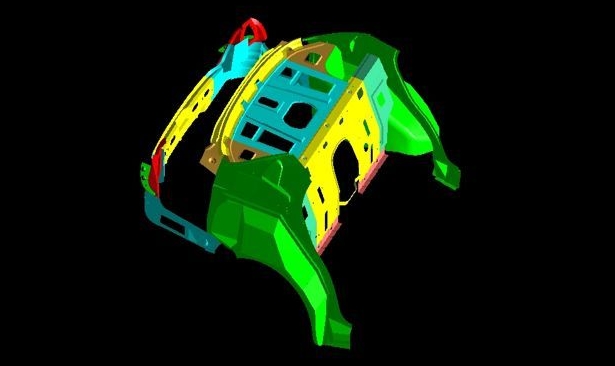Precision and Performance: How Metal Stamping Enhances Efficiency in Automotive Engine Manufacturing+ View more
Precision and Performance: How Metal Stamping Enhances Efficiency in Automotive Engine Manufacturing
+ View more
Date:2023-12-31 11:00
Introduction
Automotive engine manufacturing demands precision, performance, and efficiency to meet the stringent requirements of the modern automotive industry. Metal stamping technology plays a crucial role in achieving these goals by enabling the production of high-quality engine components. This article explores how metal stamping enhances efficiency in automotive engine manufacturing. By examining its impact on component fabrication, material optimization, design flexibility, and production efficiency, we uncover the vital role of metal stamping in the automotive industry.

1. Component Fabrication: Achieving Unmatched Precision
Metal stamping enables the fabrication of engine components with unmatched precision. From cylinder heads to pistons, metal-stamped parts offer precise dimensional accuracy, uniformity, and repeatability. Advanced stamping techniques, such as progressive die stamping, allow for the simultaneous fabrication of multiple complex components, streamlining the manufacturing process. The result is engine components that fit together seamlessly, ensuring optimal performance and minimal wear over the lifespan of the vehicle.
2. Material Optimization: Lightweight and Durable Solutions
Efficiency in automotive engine manufacturing relies on material optimization, balancing lightweight construction with durability. Metal stamping facilitates the use of advanced alloys and composite materials that offer high strength-to-weight ratios. By precisely shaping and forming these materials, metal-stamped components achieve the desired structural integrity while minimizing weight. This not only enhances fuel efficiency but also improves overall vehicle performance, reducing emissions and contributing to a more sustainable automotive industry.
3. Design Flexibility: Meeting Varied Engine Requirements
Metal stamping provides exceptional design flexibility, catering to the diverse requirements of different engine configurations. Whether it's inline, V-shaped, or boxer engines, metal stamping allows for the creation of custom components tailored to specific designs. The versatility of stamping techniques enables the production of intricate shapes, contours, and features, ensuring a perfect fit within the engine system. Engine manufacturers can optimize performance, efficiency, and space utilization through the flexibility offered by metal stamping.
4. Production Efficiency: Streamlining Manufacturing Processes
Metal stamping greatly enhances production efficiency in automotive engine manufacturing. With automated systems and high-speed stamping techniques, manufacturers can produce large quantities of engine components rapidly and consistently. The use of progressive dies enables multiple operations to be performed in a single pass, reducing production time and minimizing waste. This streamlined manufacturing process improves productivity, reduces costs, and ensures consistent quality control throughout the production line.
5. Quality Control: Ensuring Reliability and Performance
Metal stamping contributes to the overall reliability and performance of automotive engines through rigorous quality control measures. Advanced inspection technologies, such as optical measurement systems and automated vision systems, verify the dimensional accuracy and quality of metal-stamped components. This ensures that each component meets specifications and performs optimally under demanding operating conditions. The stringent quality control protocols associated with metal stamping contribute to the reputation and longevity of automotive engines.
6. Advancing Technology: Driving Innovation and Progress
Continuous advancements in metal stamping technology drive innovation and progress in automotive engine manufacturing. Collaborations between metal stamping experts, engine designers, and material scientists lead to improvements in stamping techniques, materials, and manufacturing processes. Research and development efforts focus on enhancing efficiency, reducing environmental impact, and embracing emerging trends, such as electrification and lightweight construction. Through ongoing technological advancements, metal stamping remains at the forefront of automotive engine manufacturing.
Conclusion
Metal stamping plays a vital role in enhancing efficiency in automotive engine manufacturing. Its precision, material optimization, design flexibility, production efficiency, and quality control contribute to the performance, reliability, and sustainability of modern engines. As the automotive industry continues to evolve, metal stamping will remain a crucial technology, driving innovation and progress in engine manufacturing. By combining precision and performance, metal stamping enables automotive manufacturers to meet the demands of efficiency-conscious consumers and create more advanced, fuel-efficient, and environmentally friendly vehicles.
Share to:
Recommend wonderful blog posts

